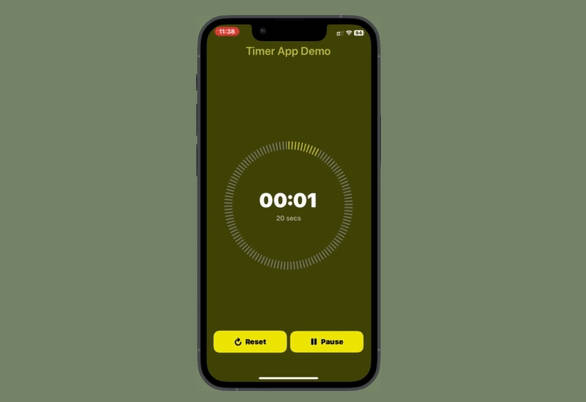Timerable ⏰
The most perfect Swift Timer you'll ever need.
A protocol-oriented Timer Factory with all the features you'll ever need.
I wrote it in both RxSwift and Native Swift. hope you'll enjoy.
If you find this useful don't forget to star ⭐️.
features
- Solved the background time problem: if your app state changes to background the timer won't stop and if you open the app you'll see the timer is still update.
- Easy to use: Instead of making a timer for each part of your code easily use this few lines of codes.
- Disposable: Instead of calling deinit to invalidate timer and remove the timer from memory manually just use this and it will do that automatically.
- Protocol Oriented: You can conform to this protocol to easily use it.
- Reactive
- Testable
- Developer friendly
Timerable
The Native Swift Timer. If you are using native swift and not using RxSwift you can use this file.
RxTimerable
The RxSwift Timer. If you are using RxSwift you can use this File.
Usage
- Simply just download and add
RxTimerableorTimerableto your project. - in the class or wherever you want to use this Timer simply add these lines of codes.
⚠️ For better understanding read the line by line code documentation ⚠️
let timer = TimeCounter()
let decreasingTime = TimeDecreasing(time: [.seconds(30)])
let increasingTime = TimeIncreasing(time: [.days(1), .minutes(34), .seconds(20)])
timer.setTimer(time: decreasingTime)
timer.start()
timer.timerDidEnd { in
print("Time Ended ")
}
timer.bind { model in
print("log", model)
}
Line by Line guideline
To use timer we need an instance:
let timer = TimeCounter()
To tell timer what to do, we need a set of rules so we can pass whatever conforms to Timerable Protocol to initial the timer:
timer.setTimer(time: Timerable)
I already made two type of Timerable in TimerModels.swift containing TimeIncreasing and TimeDecreasing.
For decreasing Timer you can use:
let decreasingTime = TimeDecreasing(time: [.seconds(30)])
For increasing Timer you can use:
let increasingTime = TimeIncreasing(time: [.days(1), .minutes(34), .seconds(20)])
After assigning initial values you MUST START the timer, to do so:
timer.start()
Bindings
For binding to Timer there are two callbacks:
- For binding to update the UI or do something in each interval you must use:
timer.bind { model in
print("log", model)
}
- For binding to finishing timer you should use:
timer.timerDidEnd { in
print("Time Ended ")
}




